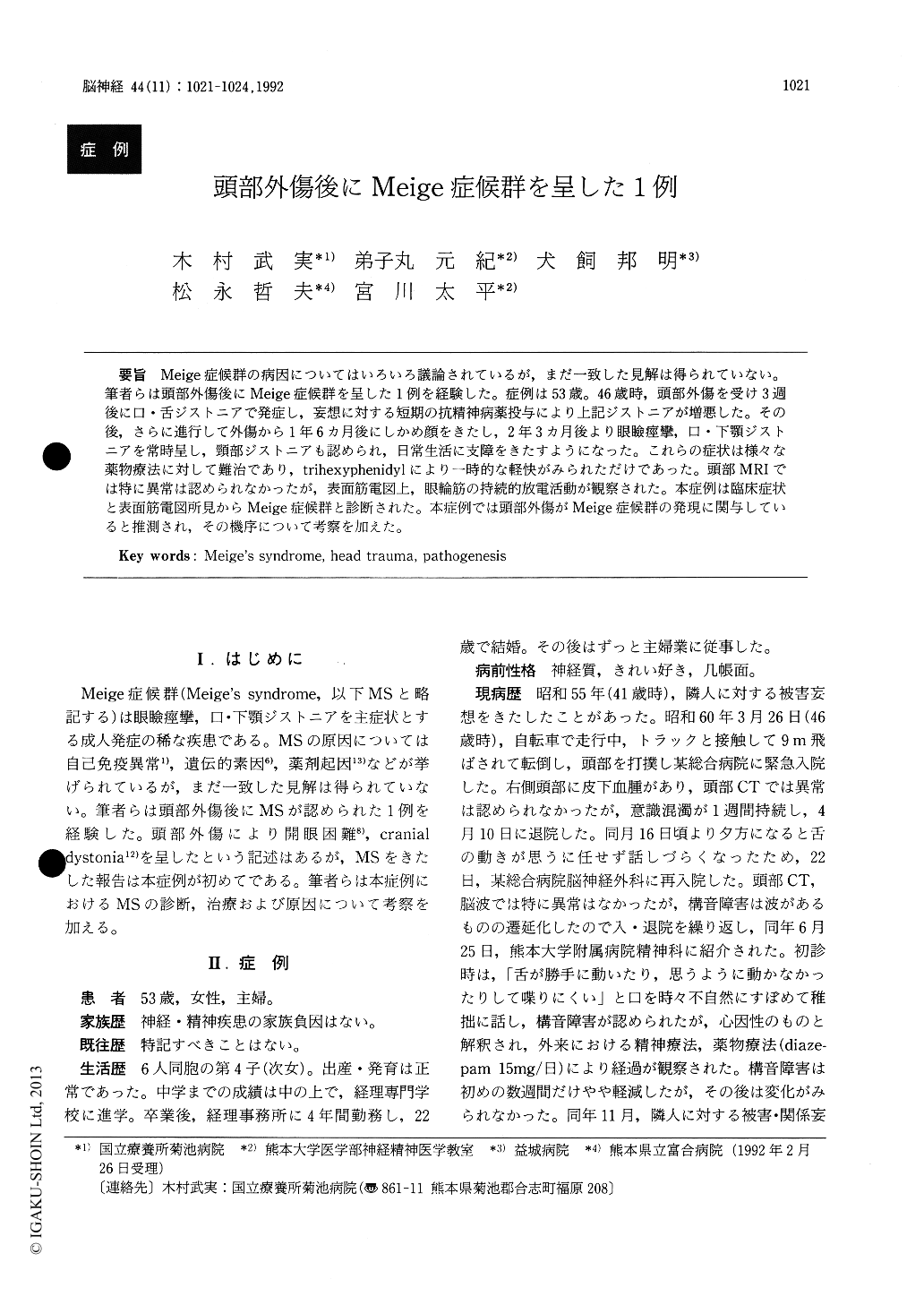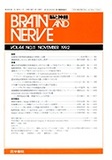Japanese
English
- 有料閲覧
- Abstract 文献概要
- 1ページ目 Look Inside
Meige症候群の病因についてはいろいろ議論されているが,まだ一致した見解は得られていない。筆者らは頭部外傷後にMeige症候群を呈した1例を経験した。症例は53歳。46歳時,頭部外傷を受け3週後に口・舌ジストニアで発症し,妄想に対する短期の抗精神病薬投与により上記ジストニアが増悪した。その後,さらに進行して外傷から1年6カ月後にしかめ顔をきたし,2年3カ月後より眼瞼痙攣,口・下顎ジストニアを常時呈し,頸部ジストニアも認められ,日常生活に支障をきたすようになった。これらの症状は様々な薬物療法に対して難治であり,trihexyphenidylにより一時的な軽快がみられただけであった。頭部MRIでは特に異常は認められなかったが,表面筋電図上,眼輪筋の持続的放電活動が観察された。本症例は臨床症状と表面筋電図所見からMeige症候群と診断された。本症例では頭部外傷がMeige症候群の発現に関与していると推測され,その機序について考察を加えた。
The pathogenesis of Meige's syndrome (MS) is controversial and has yet to be determined up to today. We studied a case of MS associated with post head trauma. The patient was a 52-year-old female. At the age of 46, she began to suffer from oro-lingual dystonia after head trauma induced by a traffic accident and the brief administration of neur-oleptics to the delusion deteriorated the dystonia.She showed a wry appearance after 1 year and 6 months of the trauma and began to exhibit blephar-ospasms, oro-mandibular dystonia and cervical dystonia after 2 years and 3 months. For these symptoms her daily life became difficult. These symptoms were resistant to various drug therapies, although trihexyphenidyl relieved the symptoms transiently.
Laboratory examinations and cranial MRI findings were normal. By surface electromyogram of ocular orbicular muscles, bilateral continuous discharge was observed. This patient was diagnosed as MS by clinical symptoms and surface electromyogram findings. It was inferred that the head trauma was associated with the development of MS. We discussed the pathogenesis of MS in the present case and it was speculated that MS was presented by a minute lesion of the brain stem which was produced at the time of the head trauma.

Copyright © 1992, Igaku-Shoin Ltd. All rights reserved.


